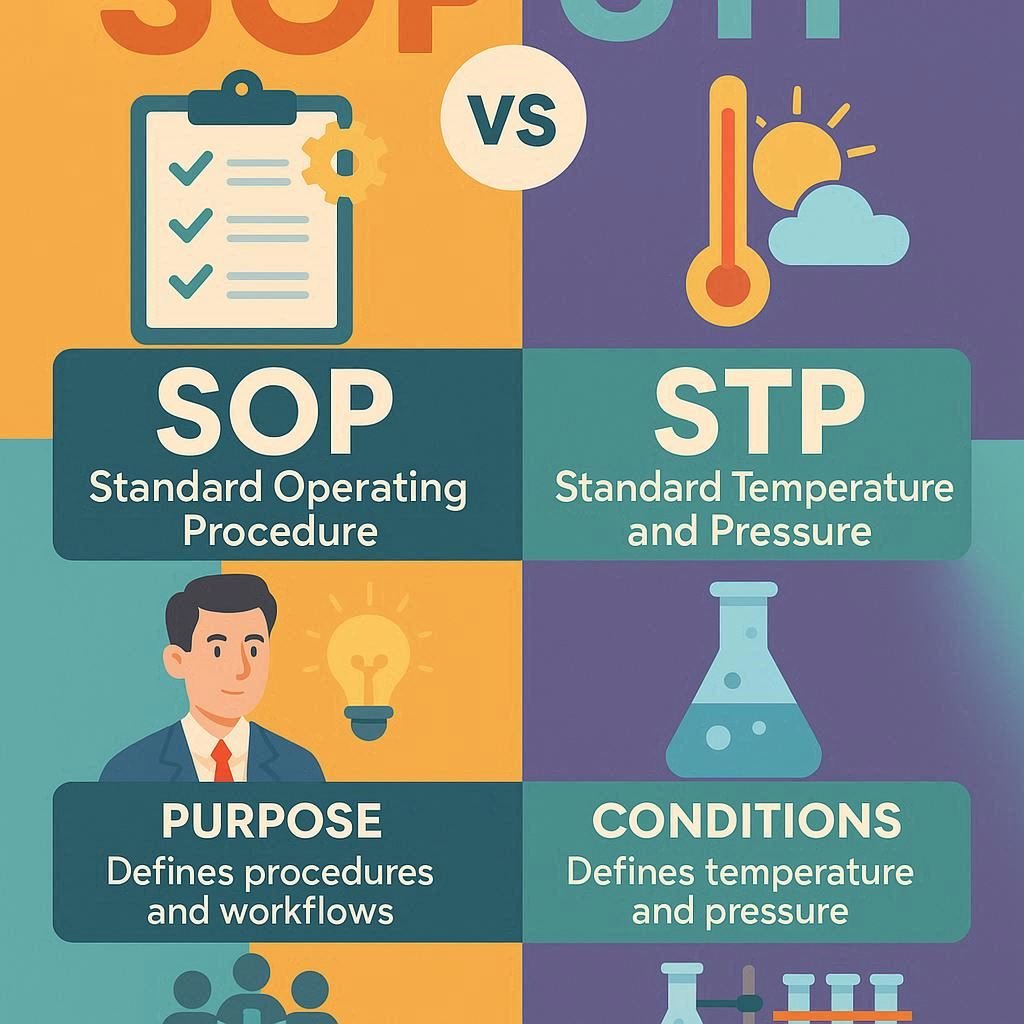
Both SOP and STP play a vital role in maintaining the quality, safety and efficacy of a pharmaceutical in the pharmaceutical industry. An SOP (Standard Operating Procedure) outlines general instructions for routine tasks, ensuring consistency and efficiency. In contrast, STP refers Standard Testing Procedure related to the method of analysis. While the SOP provides the […]
Both SOP and STP play a vital role in maintaining the quality, safety and efficacy of a pharmaceutical in the pharmaceutical industry.
An SOP (Standard Operating Procedure) outlines general instructions for routine tasks, ensuring consistency and efficiency. In contrast, STP refers Standard Testing Procedure related to the method of analysis. While the SOP provides the overall framework for operations, the STP details the precise steps for conducting a specific test, ensuring accuracy.
An STP is a detailed, step-by-step procedure designed to guide the process of performing a specific test or experiment. It ensures that tests are conducted in a standardised way, yielding accurate and reproducible results.
An SOP is a set of written instructions that outline how to perform routine tasks or operations consistently and efficiently across an organization. It provides a standard framework to ensure tasks are carried out in the same way every time.
SOP (Standard Operating Procedure) is a set of general instructions that standardize routine tasks across an organization to ensure consistency and efficiency.
STP (Standard Testing Procedure) is a detailed, step-by-step guide for performing a specific test or experiment, ensuring accuracy and reproducibility of results.
The key difference between SOP (Standard Operating Procedure) and STP (Standard Testing Procedure) is:
SOP: A broad, standardized set of guidelines for performing routine tasks or operations consistently across an organization. It covers a wide range of activities in various departments.
STP: A specific, detailed procedure focused on conducting a particular test or experiment. It ensures accuracy and repeatability in testing processes, typically used in labs or research settings.
In short, SOPs are for general operations, while STPs are specialized instructions for testing.
SOPs are broad and cover general procedures across various operational tasks, while STPs are more focused and provide specific instructions for carrying out particular tests or analyses.
Yes, an STP is a specialized form of an SOP. While SOPs provide broad operational guidelines, STPs focus specifically on the procedures required for conducting tests or experiments.
SOPs are used in various industries such as manufacturing, healthcare, finance, and administration to standardize procedures, maintain quality, and ensure regulatory compliance.
STPs are most commonly used in laboratory, scientific, research, and quality control settings to ensure consistent and reliable testing processes.
An SOP can vary in detail depending on the complexity of the task. It provides a general framework but may also include detailed steps depending on the process being standardized.
An STP is highly detailed, providing specific instructions to ensure each test or experiment is conducted precisely and reproducibly, typically including materials, equipment, and step-by-step guidelines.
SOPs ensure quality control by standardizing processes across the organization, reducing the likelihood of errors, ensuring consistency, and helping meet industry regulations.
TPs ensure accuracy by defining the exact steps, conditions, and techniques required for testing, minimizing variability and improving reproducibility of results.
Yes, SOPs are flexible and can be customized for different tasks, departments, or even industries. They can be revised to fit the specific needs of each operational area.
STPs are generally not modified for different tests. They are specific to a single test or experiment, and modifications are usually made only when the test procedure changes.
SOPs help organizations comply with regulations by documenting standardized processes, ensuring consistent practices, and making it easier to demonstrate adherence to industry standards during audits.
Yes, STPs are crucial in regulated industries, such as pharmaceuticals, healthcare, and environmental testing, where accuracy and reproducibility of tests are required for product safety and compliance.
OP Example: An SOP for a manufacturing company could detail how to calibrate machinery, ensuring that each machine is calibrated the same way every time.
STP Example: An STP for a lab might include a step-by-step procedure for conducting a blood glucose test, specifying the reagents, equipment, and process to be followed for accurate results.
You May Like
| Aspect | SOP (Standard Operating Procedure) | STP (Standard Testing Procedure) |
|---|---|---|
| Definition | A set of general instructions for performing routine tasks or operations. | A detailed procedure for conducting a specific test or experiment. |
| Purpose | Ensures consistency, quality, and efficiency in performing routine operations. | Ensures accuracy, reproducibility, and standardization of test results. |
| Scope | Broad and applies to various processes, activities, or tasks. | Narrow and focused on specific testing protocols or experiments. |
| Context | Used across various industries like manufacturing, healthcare, and administration. | Primarily used in scientific, laboratory, and research settings. |
| Content | General guidelines, steps, and instructions for consistent execution. | Step-by-step instructions for conducting a specific test or analysis. |
| Example | SOP for equipment maintenance, employee onboarding, or safety procedures. | STP for conducting a chemical assay, microbiological test, or equipment calibration. |
| Level of Detail | Can vary from broad to detailed, depending on the task’s complexity. | Highly detailed and specific to ensure the test is performed correctly. |
| Usage | Used by employees to follow a standardized approach for routine tasks. | Used by lab technicians or researchers to maintain consistency in test procedures. |
| Regulatory Impact | Ensures compliance with industry regulations and standards. | Ensures the accuracy and reliability of test results, often required in regulated environments. |
| Flexibility | More flexible; can be adapted for different tasks and roles. | Less flexible; tailored to a specific test or procedure. |
Quick Links